Some pictures from yesterday. Here's an extreme closeup of that nasty gunk I found all over the solder side of the motherboard. I assume it's ancient flux residue:

There's also some on the component side, especially around the power supply connection lugs and on the jumper points. (The wires running to the toggle switches on the back panel are visible in this photo, note the brown gunk on the baud rate selection pad.)
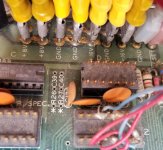
It was really thick on the serial connector solder pads:
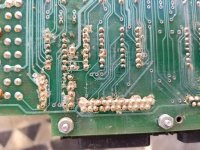
It does pick/wash off (after picture of the serial connector below), but it's pretty stubborn. Where it comes off the board *looks* pretty much unharmed... I hope, anyway. Is there a safe solvent that would assist in getting this stuff off?
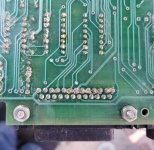
Here's a top view of the motherboard before I took it out. Other than a couple dead bugs it was mostly just dusty, so it doesn't *look* like there were any mammals living it, at least.
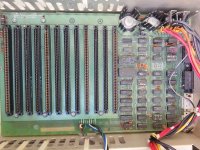
... which is why the disgusting appearance of the disk drives was kind of surprising. On both drives the bare metal of the drive chassis were covered with a chalky/scaly white deposit:
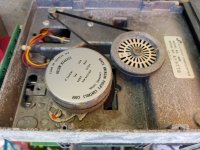
The loose scale wipes off fairly easily but the metal underneath does seem like it's mildly corroded, and some other parts of the computer had/have a white film on them that seems to be dust from whatever was going on. The plate that the drives screw to in the bottom of the machine actually has some significant deposits of this crud built up on it that don't want to come off. See this picture, taken after putting quite a lot of elbow grease into trying to get the stuff off; it definitely seems metallic in nature:

There was a dead bug stuck to one of the belts but other than that there's not a lot of evidence that something was in there peeing on things, so I'm sort of at a loss. Could this be the result of being stored in humid conditions, maybe salty air? Whatever was going on it *only* really seemed to be attacking the drive chassis; for instance, the cases of the big electrolytic capacitors look perfect. There is some surface rust on the transformer as well, but it's superficial compared to whatever happened to the disk drives.
Other than the crap all over the big casting the drives look like they might be salvageable; the spindles spin freely after the belts were unstuck and the head mechanism looks okay; even the foam pressure pads look like they're still "okay", but most of the floppy disks I have look like they may have suffered badly from whatever storage conditions might have contributed to this scale. :/







